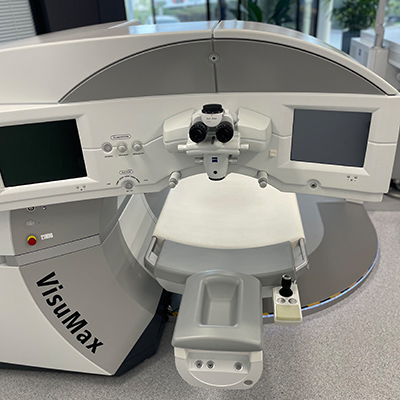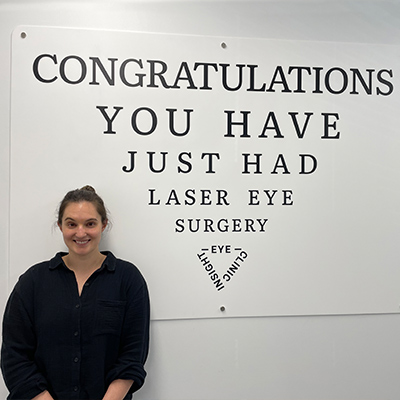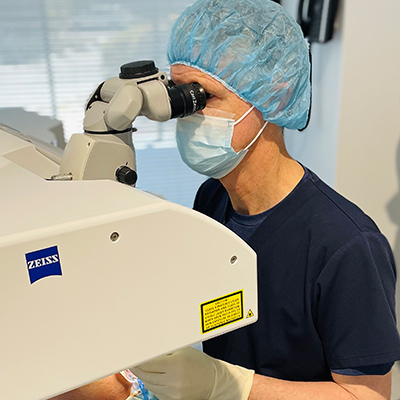PRK / ASA
PRK (photo refractive keratectomy) aka ASA (advanced surface ablation) is a type of refractive surgery to correct myopia (short-sightedness), hyperopia (long-sightedness) and astigmatism. PRK was the first type of laser eye surgery for vision correction and is the predecessor to the popular LASIK and SMILE procedures.
What is PRK?
PRK is also known as ASA or LASEK. Despite it’s many aliases, the method is typically the same across the board with refractive surgeons. PRK is often recommended when a patient is not suitable for LASIK or SMILE. This may be due to the cornea being too thin and the surgeon is unable to create a flap/lenticule safely. This may also be due to the presence of scarring on the cornea or weakness of the corneal structure.
Before your PRK Procedure
Consultation process

Before any procedure can be performed, you will require a thorough eye examination with Dr Furness to ensure you are a suitable candidate. Some of the things that we will be assessing during this consultation are:
- Stable prescription – Your prescription must be stable for a minimum of 12 months prior to surgery
- General health of eyes
- Specific refractive error (prescription) and if it is within our treatment parameters
- up to -8.00 dioptres of short-sight
- +5.00 dioptres of long-sight
- -4.00 dioptres of astigmatism
- Corneal thickness
- Visual acuity with and without glasses
- Pupil size
- Shape of cornea
- Ocular history
- Any other eye conditions or family history that is relevant
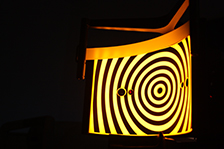
A map of the shape of your cornea will be taken using a topography scanner. You will be asked to keep your contact lenses out for 10 – 14 days prior to your consultation (if soft contact lens wearer) or longer for hard / gas permeable lenses as they can warp the shape of the cornea supplying inaccurate measurements. If this occurs, you will be asked to extend the length of time the contact lenses are out and return for more scans and testing on another date.
Approximately 80% of patients that fit the initial criteria for SMILE or LASIK are suitable to proceed with treatment. For the other 20% of patients, they may be recommended PRK or ICL (implantable contact lenses). Both are fantastic alternatives to SMILE & LASIK correcting your refractive error and leaving you spectacle independent. A small amount of that 20% are not suitable for anything at all.
During your PRK procedure
At the beginning of the PRK procedure, Dr Furness will use a local anaesthetic eye drop to fully numb the eye(s) and a small clip is used to hold the eyelid open during the procedure. While it is in place, you cannot feel it and you can blink as normal. It will feel exactly as if you are blinking, even though the eye does not close. There is no need to try to keep your eyes open.
Dr Furness will use a weak alcohol based solution which he places inside a small ring that rests on the surface of the eye to soften the cells (epithelium). The cells are then removed to expose the underlying tissue. The Zeiss MEL 80 excimer laser laser beam is applied to remove microscopic amounts of tissue to reshape the cornea, thus; correcting the refractive error.
The eye is then thoroughly irrigated before Dr Furness puts a clear contact lens over the eye that acts as a bandage for the first 3 days following surgery. The bandage contact lens slightly improves comfort for the first 3 days that it is worn. The procedure takes approximately 20 minutes to complete.
Day of Surgery – What to expect
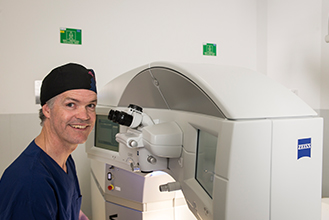
All the information that you require about your surgery day will have been provided at your consultation. Laser eye surgery is performed with Dr Furness at our state of the art surgical suite on a Friday in Westminster, WA.
You will be at the clinic for approximately 3 hours on the day of your procedure. The laser operating suite is precisely controlled for both temperature and humidity so light comfortable clothes are all that will be needed. It is better to have only a light snack and drink well prior to the operation as anxiety and a full stomach can make you uncomfortable when lying flat. We ask that you do not wear any perfume / aftershave or alcohol based deodorants and women are asked to not wear any make-up ensuring the eye area is thoroughly cleansed.
You will be greeted by by the staff upon arrival and begin the admission process prior to being taken to the laser suite for your procedure. The admission process consists of confirming information and going through your post-operative eye drop regime. The eye drops are very important as they fend off the risk of infection, combat dry eye and settle any inflammation caused which is to be expected following PRK. You will also be given strong pain relief tablets to take as necessary after the procedure or before bed.
Once your PRK procedure is complete, you will be brought to the comfortable recovery area to relax. Before you are given the all clear to head home, Dr Furness will see you once more to have a final look at your eye(s) and an opportunity to ask any questions that may have arisen. Questions are rare as we ensure our patients are fully equipped with knowledge about their procedure, aftercare, do’s and don’ts and general expectations prior to the day of surgery.
Once you are discharged, you should travel straight home. We recommend a friend or family member be available for the first night following surgery for extra assistance with eye drops and support. It is not advisable to drive until Dr Furness has confirmed you have reached driving standards. This will likely occur at your 3 day post-operative visit when your bandage contact lenses will be removed. To put your mind at ease, you are given Dr Furness’ mobile number for out of office hours for any queries or concerns you may have.
PRK Aftercare
You will be provided with an eye drop medication chart and your post-operative eye drops on the day of surgery. It is important these are taken as recommended as they will minimise healing time and improve comfort in your eyes. We recommend that you wear non-prescription sunglasses when outdoors for the first couple of weeks following surgery as a temporary side effect of your procedure may be light sensitivity. Sunglasses will also help to keep any dust that may be present in the air from getting into your eyes and causing further dryness and / or irritation.
You should avoid rubbing your eyes following your procedure. So that you can avoid rubbing your eyes in your sleep, the hospital will provide you with clear plastic eye shields to wear for the first 5 nights after your procedure whilst the flap heals and secures itself back in place. Avoid getting any water in the eyes for the first couple of weeks after your laser eye treatment. It is common for people to squeeze their eyes closed after surgery when eyes are itchy or when bathing. Please avoid squeezing the eyes closed. Itchy eyes are caused by dryness which is the most common side effect following laser eye surgery and a lubricating eye drop can be used to improve comfort.
We ask that you do not wear any eye make-up for the first 7 days following PRK. Contact sports should be avoided for up to 4 weeks following your procedure and it is a good idea to disclose to Dr Furness at your consultation what sort of sports and hobbies you take part in so that we can advise you accordingly about your aftercare. It is also recommended you do not swim for 2 weeks.
Choosing the right Surgeon
It is a common misconception that it doesn’t matter who the surgeon is as it’s the laser that does all the work. In actual fact, the lasers are responsible for approximately 10% of your visual outcome. It is important to have a surgeon with experience, a wide knowledge base and proven great outcomes. Dr Furness is a cataract, refractive and corneal specialist and has performed thousands of successful procedures since qualifying in 1988. Dr Furness is the founder and chief surgeon of Insight Eye Clinic, Westminster, which was established in 1999 and it’s sister clinic based in Subiaco.
Dr Furness’ main aim is visual freedom for his patients. You will be educated to a high degree about the procedure type that is suitable for you and advised accordingly if you are suitable for more than one procedure type as to which is safest and which will provide the best post-operative result. All 3 steps of the process are imperative to an outstanding outcome. 1. Consultation 2. Surgery 3. Aftercare. Rest assured you are entrusting your vision to a world class surgeon.


